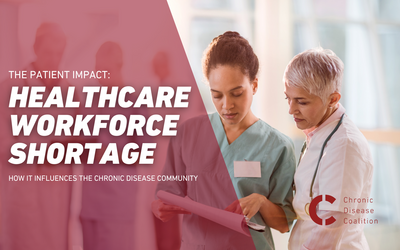
Across the nation, across different healthcare sectors and across different patient groups, we’re hearing an increasingly loud drumbeat: workforce. Workforce. Workforce.
Here’s a sample:
NPR on pharmacists, who are often a community’s front-line healthcare provider. “Rural residents are waiting in line for hours to get prescriptions filled because pharmacies are closing down or limiting hours. Pharmacy companies blame high insurance fees and employee burnout.”
The Hill on dialysis shortages: “COVID-19 has thrown into stark relief the fragile state of healthcare for many vulnerable communities and exacerbated existing disparities that are jeopardizing access to care. Thirty-seven million American adults are living with chronic kidney disease and are at increased risk for severe COVID-19. Supply chain and medical staffing shortages brought on by COVID-19 have decreased access to treatments for many of the 800,000 individuals requiring dialysis or a kidney transplant to live.”
Hospital shortages in all professions (aides, nurses, physicians and more) are combining to force hospitals to close whole service lines because they cannot keep them staffed. Rural hospitals are at a special disadvantage; it’s always been hard to recruit to rural areas, and the cost of hiring “travelers” to fill in gaps has become simply too high. As an example of the dynamics and the risks, consider labor and delivery units. They must be staffed 24/7 with specially trained staff. But when costs go up by more than a third (KaufmanHall), hospitals are no longer able to keep the unit open. This results in people traveling long distances to have their babies or having them in the emergency department, without the benefit of specialists.
The professions and impacts are disparate, but there is a pattern in the cause. The Baby Boomer workforce, which contains some of our most knowledgeable and experienced caregivers, was already at or near retirement age when COVID hit. And when COVID raged, workers in all parts of the hospital stepped up to care for the community in a crisis, but as the crisis burned on, workers burned out—or tragically became victims themselves.
There’s not an easy fix in sight. Demographically, the generations after the Boomers are smaller, so it was already going to be difficult to fill those shoes. Training and work demands are greater for the next generation. There’s a desperate national need to recruit, train and employ staff, as well as to better support and deploy existing members of the workforce.
Harmful effects for chronic disease patients
Many people are lucky enough to not be too affected by these shortages. Maybe they notice it takes them longer to get an appointment, or that they’re reassigned to other providers as their health system rebalances.
But for chronic disease patients, staffing shortages are much higher risk.
- Dialysis shortages and other constraints are forcing clinics to close, meaning that patients must travel even further for these not-optional treatments.
- Or take this example from NPR’s recent interview with an arthritis patient. “Lisa Raffety has rheumatoid arthritis and needs to take an anti-inflammatory medicine every day. If she can't get it on time, the consequences are severe.”
Policy fixes are out there
Many healthcare issues are politically bipartisan. A recent Kaiser Health News/NPR story indicates that the workforce shortage might be one of those. If so, we have some real chance for making life better for patients.
“Senators are eying the growing shortage of healthcare workers in the United States as one of the few problems where there is room for bipartisan solutions, even in a deeply divided Congress gearing up for a presidential election cycle.
The shortage that's only worsened since the pandemic is a prescription for skyrocketing costs, suffering, and unnecessary death, warned Sen. Bernie Sanders, I-Vt., who is the new chairman of the Senate's top health committee. … The shortage of healthcare workers of all sorts is a widespread problem, but is especially acute in rural areas and minority communities. Sanders pointed to the startling numbers of Americans living in medical care deserts to illustrate the point. There are nearly 100 million people who don't have easy access to a primary care physician, almost 70 million with no dentist at hand, and some 158 million people who have few local mental health providers, Sanders said.”
The CDC supports strategies that expands the opportunities for people to become trained caregivers. Flexibility, especially in this time of shortages, is also important, which is why we oppose rigid staffing ratios but support interstate licensing. When providers recommend it and are compensated fairly for their time, telehealth also provides life-giving access to medical services.
(See our policy priorities here and bills in your state here.)
Share Your Story
Are you a chronic disease patient who is having trouble accessing care due to staffing shortages? Or are your providers developing innovative approaches to keeping you healthy, regardless of staffing shortages?
We want to hear your perspectives! Go to the Coalition’s Share Your Story page and let us know what is happening in your neck of the woods. Your stories guide our work and help us advocate in your state and nationally for improvements.